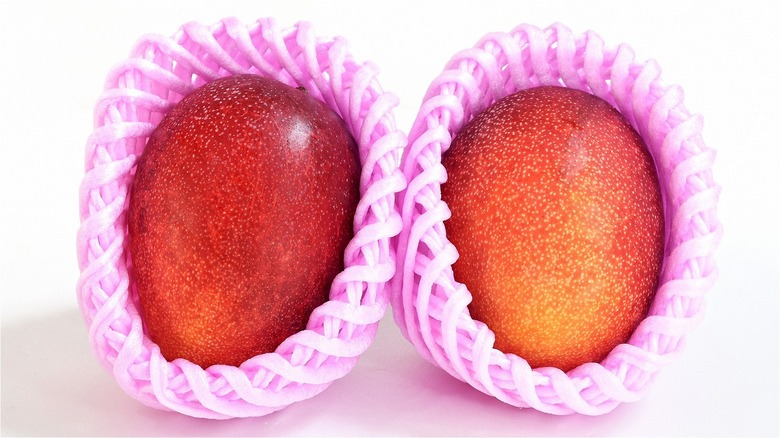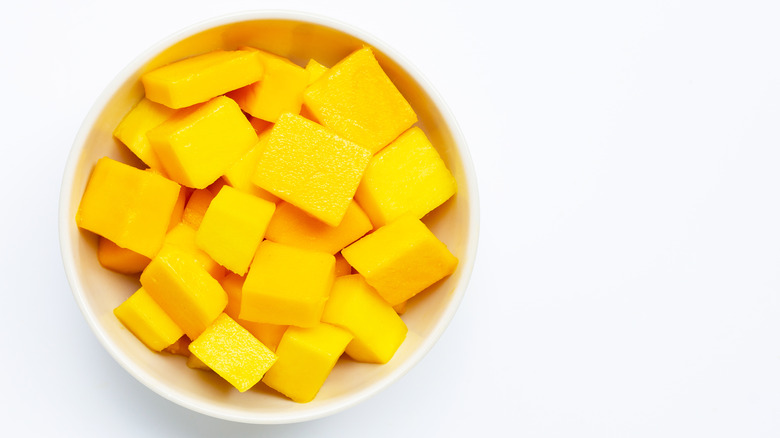The Luxurious Mangoes That Cost Four Digits Apiece
Certain fruits can get quite pricey, especially if you're chowing down on one that's out of season and had to be flown halfway across the world in order to make its way into your fruit bowl. And, thanks to the inflation that has been impacting all food items, from dairy to meat to produce, some of those costs are likely only going to climb. As Produce Pay reports, the price of produce, such as fresh fruit jumped 7.7% from what it cost in 2021, and a staggering 19.4% from prices in 2020.
That kind of inflation is nothing compared to the sticker shock you might receive when learning just how much a particular type of mango is going for, though. Now, unless you live in an area of the world where mangoes are actually grown, chances are you're used to paying a fair bit for the tropical fruit since it has to be transported from relatively far away. Consequently, you'll definitely want to ensure you're getting every last bit of fruit when peeling mangos. However, if you thought mango was pricey at a few dollars but still not in double digits, you'll be stunned to hear that in 2017, two of a particular luxury mango variety sold for $3,744, as per Atlas Obscura.
But what exactly makes them worthy of commanding such an astronomical price in comparison to regular mangoes? Well, it has a little something to do with how they're grown.
The reason behind the lofty price
Growing any crop, whether fruit, vegetables, or grain, requires knowledge and TLC. You have to ensure the plant is properly hydrated, that it's getting the nutrients it needs and that it's not being munched on by pests in the area, as Let's Talk Science explains. And, that's not even considering elements outside of your control, such as how much sunshine they're getting.
However, the Japanese farmers that grow the high-priced mangoes take that TLC to a whole new level, as Atlas Obscura outlines. The Taiyo no Tamago variety of mango, which translates to "Egg of the Sun," is encased in a small net that allows for a uniform dispersal of sunshine, which also serves as a cushion of sorts when the mango eventually ripens and drops.
The latter is another important reason these mangos command a loftier price — rather than the farmers picking them when they think the mangoes are ripe and ready to sell, they wait until the mangoes fall naturally. Essentially, nature confirms that they're the perfect level of ripeness — and the resulting flavor is super juicy with no unpalatable fibrousness, as you may find in less than optimally ripe mangoes. And, as per Puspita Nursery, these luxury mangoes typically have approximately 15% more sugar than the average mango, further enhancing the flavor.
Keep in mind, consumers have to buy them when they can, as the growing season is relatively short — as DNA India reports, they're typically only available from April to August.

